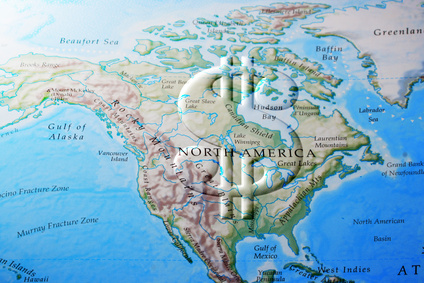As has been shown, economy cannot exist totally on it’s own, without being influenced by political factors. The colonial race from Europe and their power struggles had much to do with the shaping of our modern country, as did the fear of the United States and the mercantile nature of the capitalist class. Canada since it became a country has always had a tug of war between east-west and north-south alignments. Until the late 1980s the north-south transactions have always been protected by tariffs. However with the onset of the Conservation election victory and free trade late in the year 1988, tariffs stated coming down. As a result jobs started being sucked out of the country at a very high rate. In January of 1992 Ontario announced they would prefer to buy Pennsylvania coal over western Canadian coal. Provinces have fashioned their spending and taxation to reduce unemployment and increase the standard of living. This has been a hiderence to inter-provincial trade.
Canada’s contemplation of free trade with the U.S. first came about during the mid eighties, under Brian Mulroney’s Progressive Conservative government’s first term in office. There was strong American political pressure against Canada’s national energy policy of the previous Liberal government. As well as political pressure against it from Canada’s western oil provinces. About a year after the free trade deal was ratified , the Berlin Wall fell. A year later the reunification of Germany came into being. Also the Soviet Union collapsed in 1991. This created a type of new world order, when it came to globalized markets. Canada’s as well as the United States’s need to compete with a growing European Union and the need to make trade deals with new countries that were previously part of the Soviet Union became foreseeable. These events set the conditions for the creation and implementation of NAFTA the North American Free Trade Agreement in January 1994. It is the Canada-U.S. free trade deal with Mexico in the mix.
Almost twenty years on, after Canada joined NAFTA much of the deal seems to be lacking. For examples, unlike the deal of the European Union there are no standardized working codes, human rights or free movements of labour. And each of the three national governments are reserved about treating things like agriculture, transport, communications and banking as part of the treaty. Many challenges (rightly or wrongly) of unfair subsidies are carried out by each country (ex.Canadian softwood lumber sold to U.S. markets). Until these problems are resolves NAFTA will not be a fully satisfying deal for North Americans.
